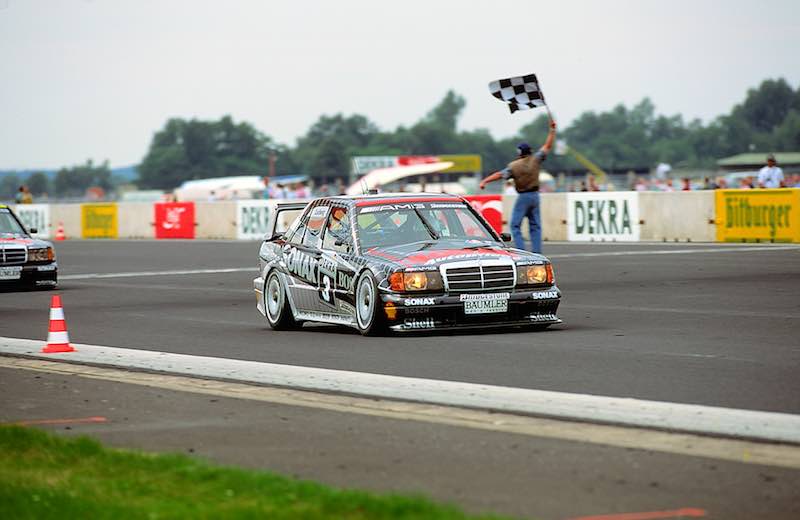On 18 June 1992, Klaus Ludwig driving an AMG-Mercedes 190 E 2.5-16 Evolution II won both races of the German Touring Car Championship at the Nürburgring. This double victory was Ludwig’s first triumph in a season he was to finish as DTM champion. An equally masterly performance was delivered in 1992 by the AMG-Mercedes 190 E 2.5-16 Evolution II racing tourer as Mercedes-Benz drivers won a total of 16 out of 24 DTM races. It was the most successful year in DTM for the AMG racing tourer, which was based on the Mercedes-Benz W 201 model series. Mercedes-Benz also produced a small number of ‘street legal’ examples of the 190 E 2.5-16 Evolution II.
It was 25 years ago that Mercedes-Benz taught the world of motorsport a lesson in evolution theory. The AMG-Mercedes 190 E 2.5-16 Evolution II racing tourer, which was based on the W 201 compact class, more than emphatically dominated the 1992 season of the German Touring Car Championship (DTM): on twelve competition days with a total of 24 races, Mercedes-Benz drivers brought home 16 victories, 17 second places and 13 third places. Klaus Ludwig was crowned German Touring Car Champion, while AMG-Mercedes won the 1992 constructors’ championship. Mercedes-Benz driver Roland Asch was runner-up, with his brand colleague Bernd Schneider taking third place. Ellen Lohr won the first race at the Hockenheimring on 24 May 1992. It was the first and still only DTM victory for a female driver.
No Subscription? You’re missing out
Get immediate ad-free access to all our premium content.
Get Started



